Posts in Category: Journalism


#AusVotes Australian Federal Election in May 2022
There’s nothing quite like the air of anticipation on the eve of an election.
With six weeks of drama, the 2022 federal election – held in May – did not disappoint.
While the bread and butter of election coverage will also be the campaign promises, announcements, and misspeaks (of which there were many!), something I wanted to do was go behind the headlines.
I wanted to explain the election for those who were disengaged or uninterested in politics.
I created a series of eight stories that focused on the questions a politically-apathetic person might be too embarrassed to ask.
The questions that we’re all expected to know even if we’ve never been given the answers – not even on the obligatory year 6 civics trip to Canberra!
2022 #AusVotes: Questions You’re Too Embarrassed To Ask (series)
- What is pork-barrelling and is it illegal?
- What is a bellwether seat, and why do they matter so much?
- What is a hung parliament?
- History of the ‘gotcha’ question: How political gaffes cost elections
- Corflute wars: How political ads, vandalism and graffiti change voters’ minds
- Can opinion polls be trusted, aren’t the polls always wrong?
- Why your postcode matters in an election: Who are the swing voters and which seats really matter?
- Don’t be a donkey: How to make sure your vote is counted correctly
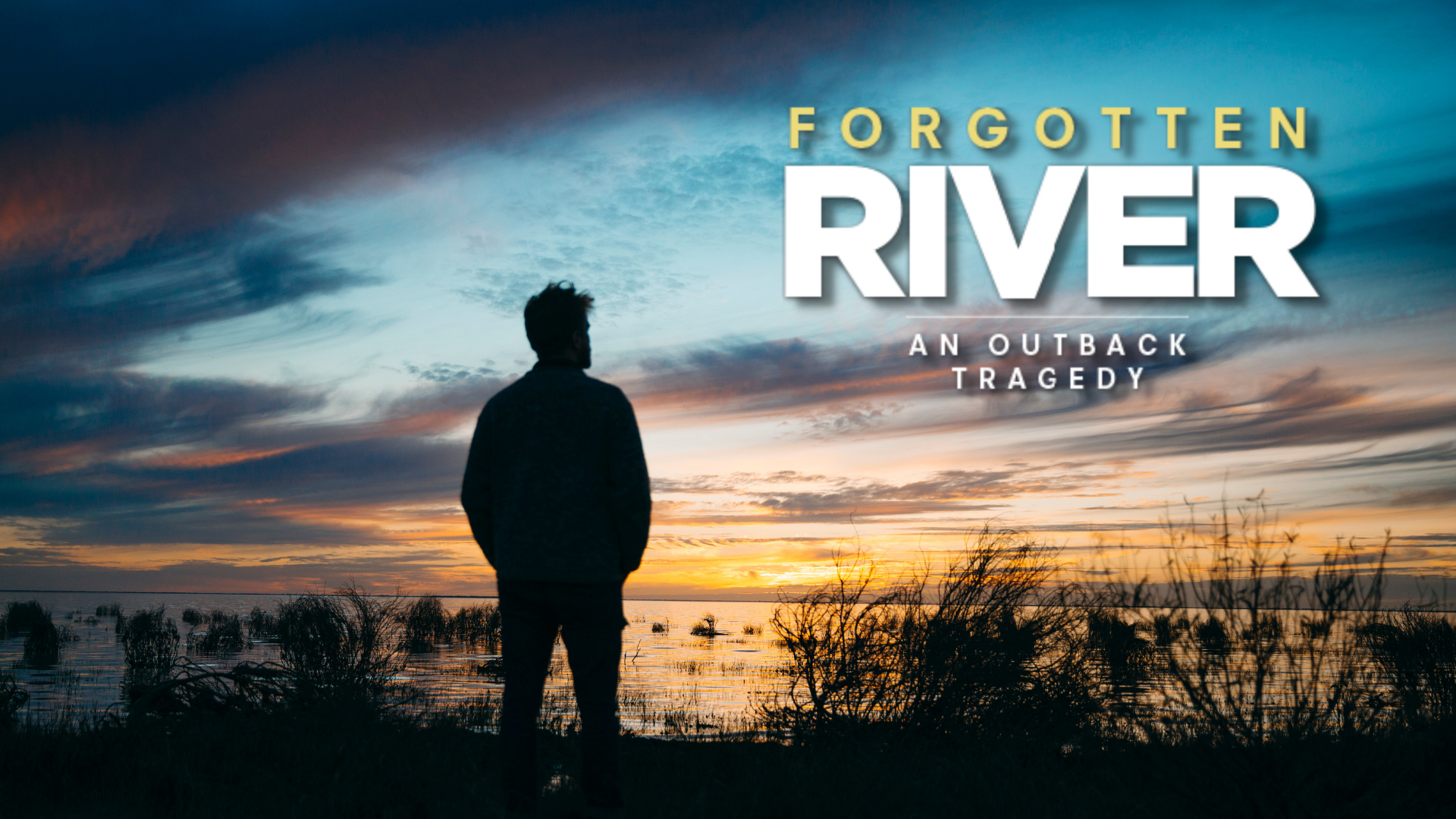

The Forgotten River: A cinematic look at the dying Darling
The magnificence of the Darling River really has to be seen to be believed.
Nearly 1500 kilometres in length, it becomes Australia’s longest river system when it runs into the Murray at Wentworth in NSW.
Its basin exists across state boundaries and is the lifeblood of communities in NSW, Queensland, Victoria and South Australia. It stretches across an area roughly three times the size of Germany.
But the Darling is dying. Its poor health is a result of over-allocation of waters to northern irrigators, polluting runoff, and years of drought.
The Forgotten River documentary is a collaboration from Canberra Times photographer Dion Georgopulous and national reporter John Hanscombe during a trip to Outback NSW to listen to the stories of the people of the Darling, or the Barka, as First Nations people know it. The video was produced by ACM group video journalist Emma Horn.
The Forgotten River team, with Voice of Real Australia host, Tom Melville, wanted to take listeners and readers to the banks of the Darling River where, despite decades of neglect, the people refuse to give up fighting for the life of this national icon.
Throughout 2019, the Darling River ceased to flow in many locations, leaving communities that rely on its flow at a loss.
Thankfully, increased rainfall recently has improved the river’s flow and its overall health.
After harrowing scenes of fish kills across Menindee’s lakes in 2019-2020, the lake system has now reached 100 per cent capacity.
It’s an encouraging sign for the river system, but those who live on its banks are very aware, no amount of wishing will ever break the reality that bad times could arrive without warning.
Listen to their story in their own words with our Voice of Real Australia podcast series.
The documentary supports the Forgotten River podcast. A four-part podcast special and accompanying series of articles, photos and videos telling the stories of the Darling River and its people.
Listen to the full story on our podcast. Search Forgotten River on Apple Podcasts, Spotify or your preferred app. You can also click here, or use the web player in this article.


Lost Trades in the NSW Riverina
At the end of 2019, I embarked on a project to document some of the NSW Riverina’s old-world artisans.
Travelling around the regions, I looked for the men and women who have devoted their lives to keeping old traditions alive.
They are the creators that keep our communities thriving by embracing the artforms of yesteryears. The blacksmiths, the potters, the leatherworkers and the carpenters who work their hands to the bone to shun mass production in all its facets.
Here are a few of their stories:
- Preserving the old world charm of handmade millet brooms in Tumut
- The lost art of blacksmithing brought back to life in Junee
- Wheel-thrown ceramics faces revival in Wagga Wagga
- Last of the world’s great stock whipmakers in Lake Albert
- The restorative power of pioneer woodworking in the Riverina
- Upholding the ancient art of saddlery from a garage in Kooringal
More from my work at The Daily Advertiser over here.
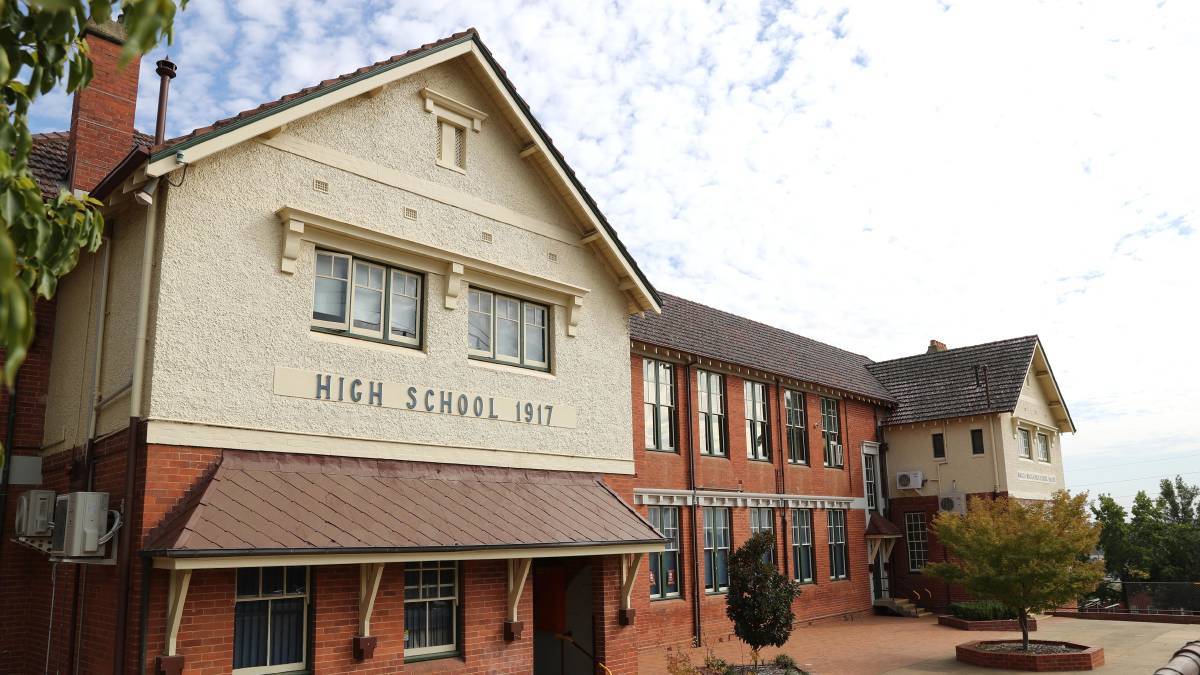

Education rounds in Wagga Wagga NSW
Over the past two years at The Daily Advertiser in Wagga Wagga NSW, I have covered a variety of rounds.
Since August 2019, my principal round has been education. Covering all the news that’s fit to print at schools, TAFEs and universities in Wagga has meant for a lot of ups and downs.
I’m the one who gets to celebrate the achievements of our regional young people as they graduate and go on to kick goals personally and professionally.
I am also tasked with uncovering the injustices and struggles that unfortunately do occur in our institutions.
- Investigation into the sudden disappearance of Kildare Catholic College principal Rod Whelan
- Wagga’s Charles Sturt University staff and community prepare for gutting amid revenue downfall
Here is a snapshot of other more notable pieces I have covered for The Daily Advertiser:
- Wisdom of the Wiradjuri welcomed in farming first
- Department’s refusal to pay overtime costs students vital learning
- Teachers admit losing the joy of jobs as admin creeps into the classroom
- Public schools at extreme disadvantage as equity gap widens
- Back-to-basics schooling rhetoric questioned by under-resourced teachers
- Alumni call for university to return to regional focus after falling in global rankings
- PNG’s first female veterinarian readies to return home after study in Wagga
More from my time at The Daily Advertiser over here.
COVID-19 in regional Australia


Working and living in regional NSW during a global pandemic has been nothing short of a career-defining experience.
The Daily Advertiser covers news for the Riverina and sits only hours from the NSW-Victorian border. Broadly speaking, Wagga Wagga exists an equal distance from Melbourne and Sydney, while the nation’s capital in Canberra is really just a few hours down the road.
Therefore, the restrictions that pass in Victoria, NSW, and ACT have huge ramifications for the transient towns of the Riverina. There may be few hotspots and breakouts of the deadly virus, but there is no end of news.
Here is a snapshot of stories I have covered for the Wagga community as the education reporter in 2020:
- Pandemic extends agonising four-year wait for refugee family’s reunion with lost son
- Families separated across countries feel the pinch of travel restrictions
- Check-in test to be offered to NSW students amid classroom disruptions
- Students feel hamstrung by ‘disjointed’ year as they prepare for HSC
- Graduating students hopeful despite uncertainty over uni, work, travel plans
- Lockdown learning promotes move to permanent homeschooling
- PhD candidates find creative ways to keep up research during pandemic
- Teachers advocate for partial return to classrooms amid virus response
- More than 1000 awaiting rescheduled driving tests in Riverina
- Driver test backlog leaves lives in limbo as new mum loses out on job
- Refugee Week in a pandemic: Finding a home in Wagga after two decades in a camp
More from my time at The Daily Advertiser over here.
Charles Sturt University, Wagga Wagga NSW
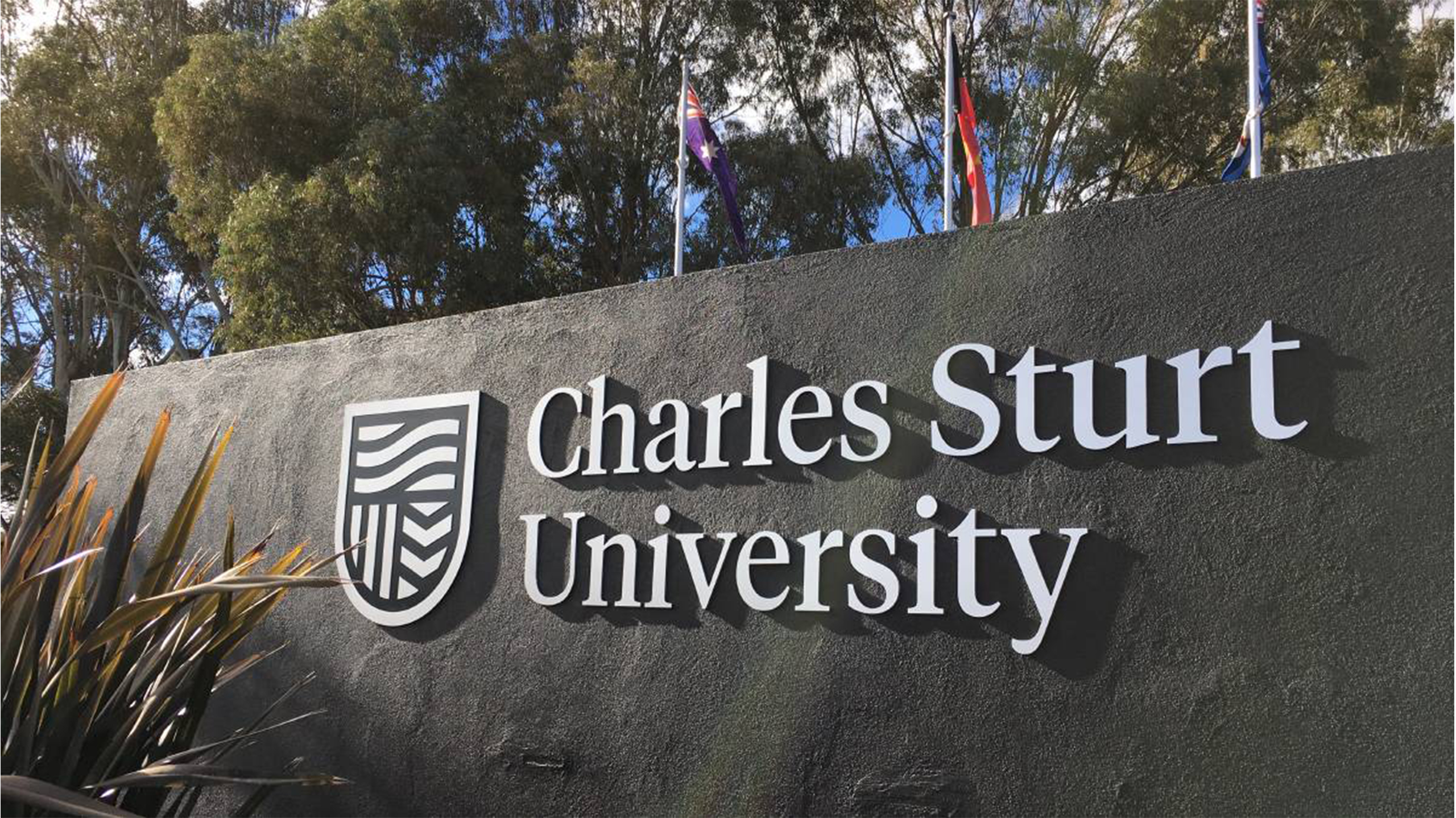

One of the main economic drivers in the regional city of Wagga Wagga is the university.
Though it started under another name as a separate, independent institution, for the past 30 years the Estalla-based campus has been a part of the Charles Sturt University (CSU) footprint.
In 2020, the university revealed it was facing dire financial circumstances with a projected $80 million deficit brought on, they say, by the COVID-19 global pandemic.
So began my coverage of a university in trouble for The Daily Advertiser.
- Minister calls for financial transparency at CSU
- Questions raised over timing of CSU vice-chancellor’s sabbatical
- Culture of Wagga at risk as creative industries cut from CSU campus
- Uni commits to ‘explore future’ of Riverina Playhouse theatre
- Uni staff face anxious wait as class cuts begin to roll out
- More online, less in Wagga: CSU announces first round of subject cuts
- Deepest cuts to psychology, business, creative industries at Wagga CSU
- Psychology to be given the chop as CSU reviews courses in Wagga
- CSU re-negotiates campus closure in wake of Albury-Wodonga border closure
- Lecturers fight for future of subjects at CSU in Wagga
- Curtain call: Fate of CSU Playhouse hangs in balance
- CSU seeks new vice-chancellor as Andrew Vann takes sabbatical
- Wagga campus to see ‘proportionately high’ job cuts as CSU rolls out redundancies
- Staff question job cuts based on ‘popularity’ criteria
- Union pushes to keep voluntary redundancies ‘on the table’ at CSU
- McGirr questions in parliament CSU’s ‘loss of regional purpose’
More from my time at The Daily Advertiser over here.
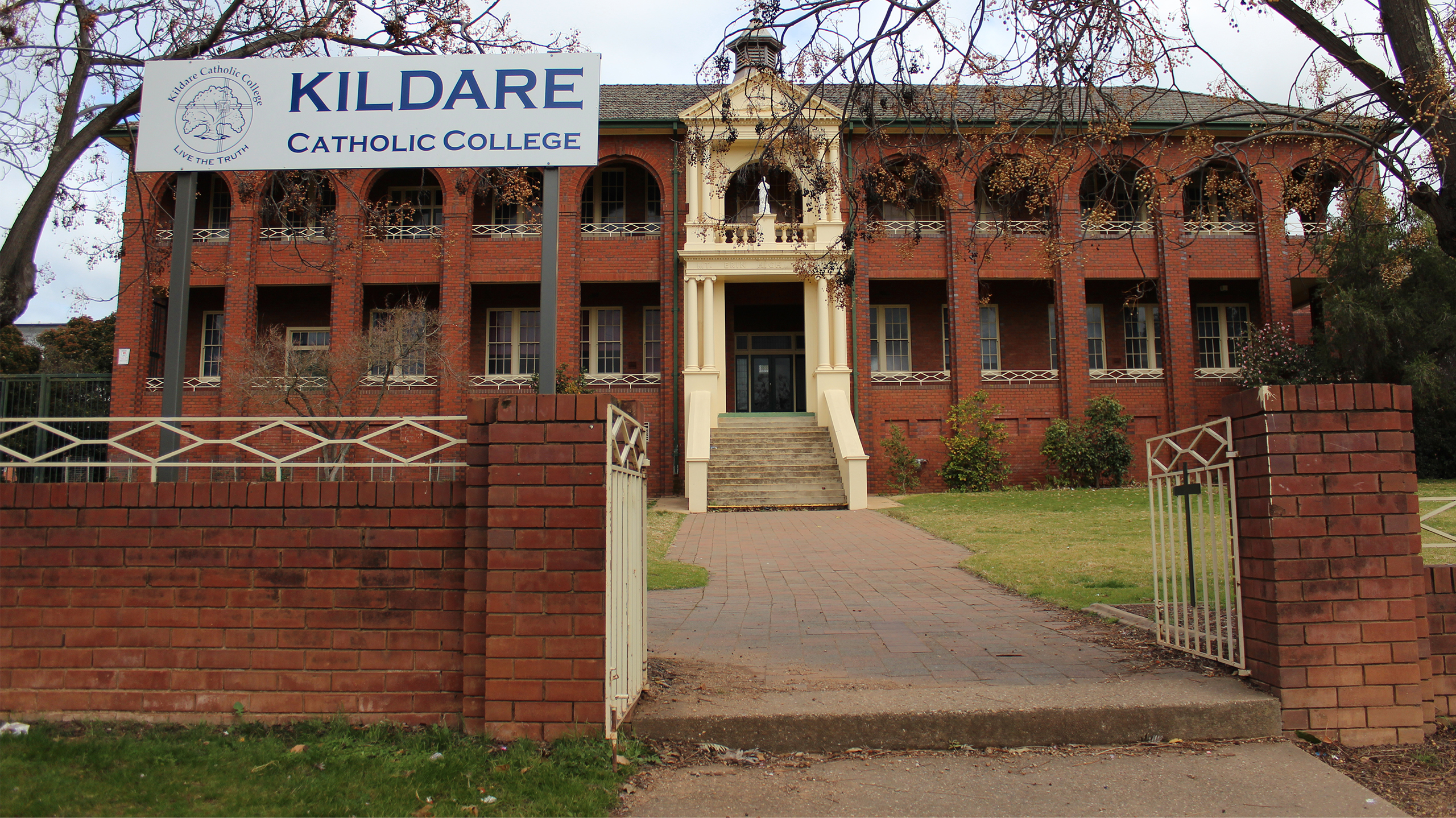

Kildare Catholic College, Wagga Wagga NSW
As a general duties reporter at The Daily Advertiser in Wagga, NSW since May 2018, covering the education rounds, I have been breaking the news about the shock departure of Kildare Catholic College principal Rod Whelan.
The story continues to unfold since the August 2019 departure of principal Rod Whelan. The Daily Advertiser has consistently stayed ahead of each update, keeping the community informed, and the powers to account.
- Kildare principal ‘no longer works at school’
- Students protest sudden departure of Kildare College principal
- School staff seek support from education union following principal’s resignation
- Calls continue for Kildare College principal’s return
- Diocese declares its ‘disappointment’ following principal’s resignation
- Psychologist Dr Michael Carr-Gregg shares concerns for student welfare in wake of Kildare principal’s resignation
- Parents host vigil in wake of Kildare principal’s resignation
- Kildare College boarding house manager tends resignation mid-term
- Prayer group ‘made to feel like criminals’ after police called on Kildare College parents prayer vigil
- ‘A wound that won’t heal’: Priest shares concerns over departure of Kildare principal
- Concerned Catholics of Wagga forms to discuss future of church in city
- Catholic schools head resigns in wake of leadership review
- Kildare Catholic College under review in wake of principal’s departure
- New Catholic schools director says she ‘does not want to know’ what happened before her arrival
- Kildare students walk out of classrooms again in show of solidarity to principal
- Students, parents unite to see principal reinstated at Kildare College
- Kildare community awaits delayed results of independent investigation
- Principal ‘will not be returning’ to Kildare College even after diocese’s apology
- Parents vow to keep fighting diocese’s decision despite independent review results
- Mixed reactions as Catholic diocese sets up new education advisory
- Kildare College appoints decorated principal with history of weathering scandals
- Healing the hurts: Veteran principal appointed to Kildare College
- Kildare College issues apology over muck up day pranks
- Kildare students reprimanded over ‘disgusting’ scavenger hunt list
- Kildare Colleges announces appointment of long-awaited new principal
More from my time at The Daily Advertiser over here.
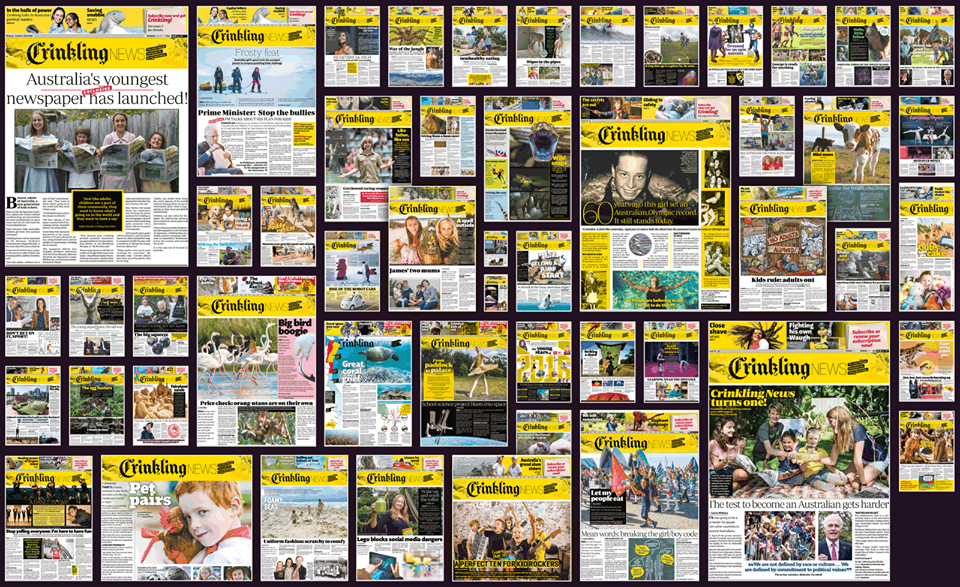

Publishing Our Kids’ Voices Can Change The World
On my left wrist, I wear three bands. One is weaved pink, yellow and orange elastic, another is a black cord with six coloured beads, and the third is a purple leather cuff.
Each of them has a deeply personal story. But I want to share the story behind just one: the purple leather cuff.
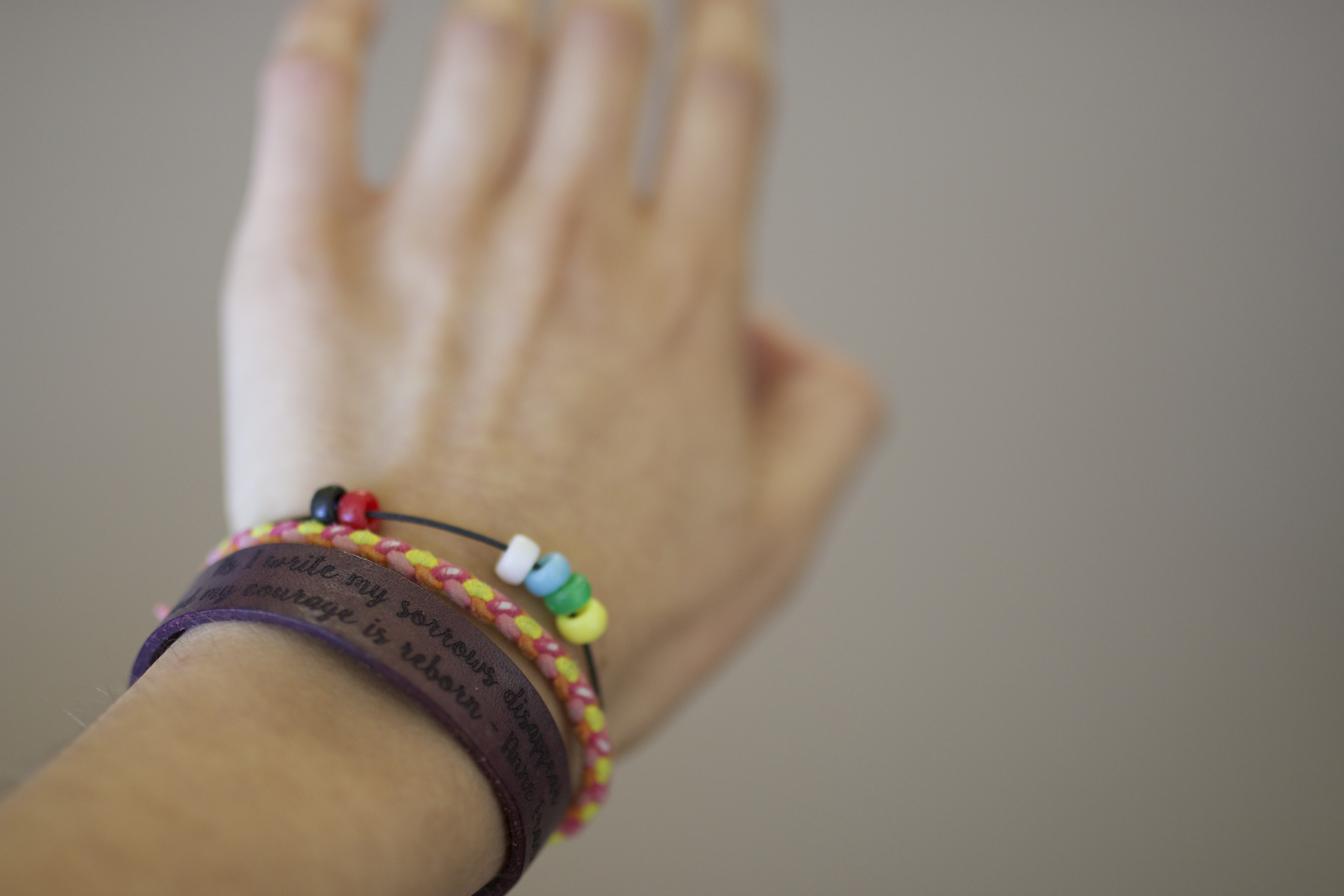
Six years ago, a Bulgarian craftswoman made it for me. Engraved in cursive writing, it says:
“As I write my sorrows disappear and my courage is reborn.”
Beautiful statement, isn’t it? Do you recognise the words?
They were first penned by a 15-year-old girl, one Tuesday in April 1944.
How do I know that? Because that 15-year-old is the most prolific teenaged author in literary history: Anne Frank.
A few months after she wrote those words, her diary abruptly ends.
On her last entry, August 1, 1944, she wrote:
“… I keep on trying to find a way of becoming what I would so like to be, and what I could be, if there weren’t any other people living in this world.”
What did Anne Frank want to be? A journalist.
She wrote that over and over again, that once she was released from the Secret Annexe, she would pursue a career in journalism.
I must’ve read her diary more than thirty times since I first picked it up in early high school. You may have a comfort food, I have a comfort book. And it’s hers.
It was not her words that first attracted me, it was her face. Dark brown eyes, curly brown hair and a prominent European nose. Just like me.
And her name: Anne Marie Frank. Just like me: Emma Marie Horn. Nothing remarkable or memorable.
But her words have since written themselves across my life. I wear them now, on my left hand – the hand I write with. Her legacy has inspired me and many others.
What if this teenager did not write her diary? What if she did not believe herself worthy to transcribe her wartime experience?
What if her father – Otto, the only survivor of the Frank family – did not empower her first by giving her the diary, the pen, and the freedom to write?
What if Otto, upon returning to the Secret Annexe, did not see the value in publishing his daughter’s words?
In 1955, the play adaptation of the diary opened on Broadway. Seven cities in Germany hosted the play throughout 1956. A year later, it opened in Amsterdam, Holland – the city Anne had once called home.
Germany was the first country in Europe to host the play.
It’s rumoured that at the end of one matinee in a small German town, when the curtain fell, faint sobbing was heard.
It grew exponentially to a communal grief as one audience member after another began responding to what they had seen.
The horrors of the Second World War were unknown to many German soldiers and civilians until the words of one 15-year-old girl sparked a national conversation.
One Dutch girl helped the world to grieve and process what had happened. And her legacy continues.
In Australia, it’s easy to feel detached from the events in Europe. Many Australian teenagers continue to read the Diary of Anne Frank. And so they should.
But over time, we have forgotten to encourage our children to find their voice.
We have not shown them that their words can make a difference.
For the past twelve months, a small team of journalists across the country have tried to fix that. They have given our nation’s children a voice, empowering them to speak and be heard.
Some have been given the opportunity to interview the Prime Minister, others have met state and national politicians, and Nobel prize winners.
They have written opinion pieces on the issues that affect them. Everything from coping with dyslexia to understanding Tourette’s syndrome.
But in two days time, that will all end, unless Crinkling News finds an enormous injection of funds.
Most European countries have a national newspaper for kids. Some countries have more than one. They understand that giving a voice to children can change the world.
But Crinkling News is the only place Australian kids can go to be heard on a national level.
Just like Otto Frank, its founder Saffron Howden, has seen the value in publishing their words. And it has already proved enormously important to so many kids.
Crinkling News should be an institution. Please help to keep it alive long enough to become one.
Our kids deserve to be heard.
Update: Crinkling News managed to raise beyond its funding goal, with time to spare. Thank you to all who contributed.
But it is always a good time to subscribe to Crinkling News!
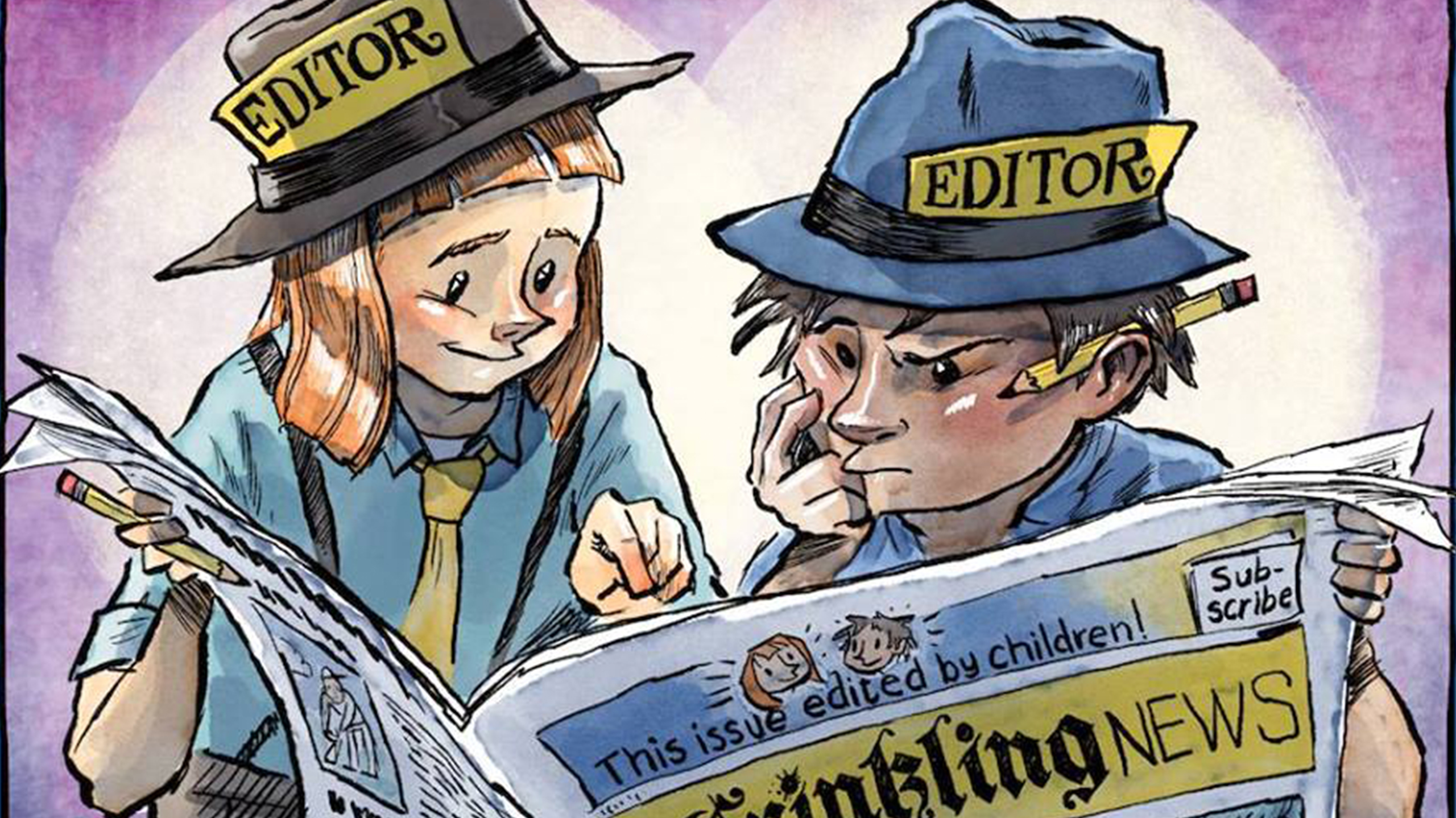

Why Our Kids Desperately Need Crinkling News
I started kindergarten in 1999.
That makes me part of the last generation to be in school in two different millennia. But that’s something I didn’t realise until much later.
Here are a few of the things I remember from 1999: my mum and her friends’ brightly coloured thick knitwear dresses, a pair of red overalls I loved to death, and the ABC TV reports on United Nations peacekeeping operations in East Timor.
No really. That’s the extent of my pre-millennium memory.
The sound of the ABC nightly news theme still brings those feelings back to me. So vivid was my connection, that in my mind, it has remained the soundtrack to East Timor.
My dad says he remembers how often I would ask about the ‘war’ in East Timor.
How many people had been hurt? How will it affect Australia?
I asked anyone who’d care to listen. My kindergarten teacher eventually told my parents I had a morbid fascination that was frightening the other kids in my class.
Consequently, I didn’t have too many friends in kindergarten. Not to worry, I soon forgot about East Timor.
Who could think of such triviality anyway, when the dreaded Millennium Bug loomed?
I was terrified of the Millennium Bug.
I was convinced I would die of it. Whatever it was, I wasn’t quite sure. I knew it would be a painful death. And seven years old was far too young to die.
But no, I did not die.
A year later, I would wish I had died in the Millennial Bug, though.
I was eight years old when two planes brought New York’s Twin Towers to the ground.
My teacher wouldn’t let us talk about it. I understand now, she was just as confused as us kids. She didn’t know how to process it either. But I needed to talk about it.
For two weeks, I was afraid to sleep.
I cried a lot. I woke up in cold sweats. I saw replays on television, I heard reports on the radio, and they played unendingly through my brain.
I was terrified.
And I had no-one to talk to about it.
My parents did their best to reassure me. I suspect they worried about the amount of ‘adult news’ I was consuming. But how could they stop me?
I was 10 years old when the internet was installed in our school library.
And suddenly I had an almost unfiltered access to all the horrors the world over.
I was very lonely and confused throughout my years at school. I had no way to make sense of what seemed to be an incredibly hostile world.
Through high school and university, I learnt better ways to cope with the brutality of it all. At least, I learnt more effective ways to hide my fear.
But then, when I finished university, a faint glimmer of hope was allowed to grow within me, perhaps for the first time in my life.
It was ignited and fanned by Saffron Howden, and the incredible team of journalists at Crinkling News.
Crinkling News is Australia’s only national newspaper for kids. It deals with the news that excites, frightens, shocks or confuses our nation’s young people.
It makes sense of all the things that made me so frightened as a child.
I met Crinkling‘s editor, Saffron when I was just weeks out of university. She had her toddler daughter with her.
She would never have to endure the intense loneliness and fear I felt at her age. She would have Crinkling News.
So, when I write, I think of that toddler as I remember her, and I think of my primary school self. About the sleepless nights, the silent pain, the many tears, that characterised my childhood.
And I think how fortunate are the kids of Australia today, that they have a team of people who are dedicated to explaining the world and allaying their fears.
Perhaps, if Crinkling News was around when I was in primary school, I would not have felt such unspeakable loneliness. Perhaps I would have been better equipped to understand the world. Perhaps I would have seen some beauty alongside the pain.
But now, the kids of Australia could be left without this hope.
Crinkling News has announced it will close its doors next week if it cannot achieve critical funding.
Crinkling News is not only crucial for informing the next generation of world leaders, it is potentially life-saving. And I speak through truckloads of my own experience.
I refuse to let this be the end!
Update: Crinkling News achieved its funding goal with time to spare. Thank you to all who contributed!
But it is always a good time to subscribe to the national newspaper for kids!